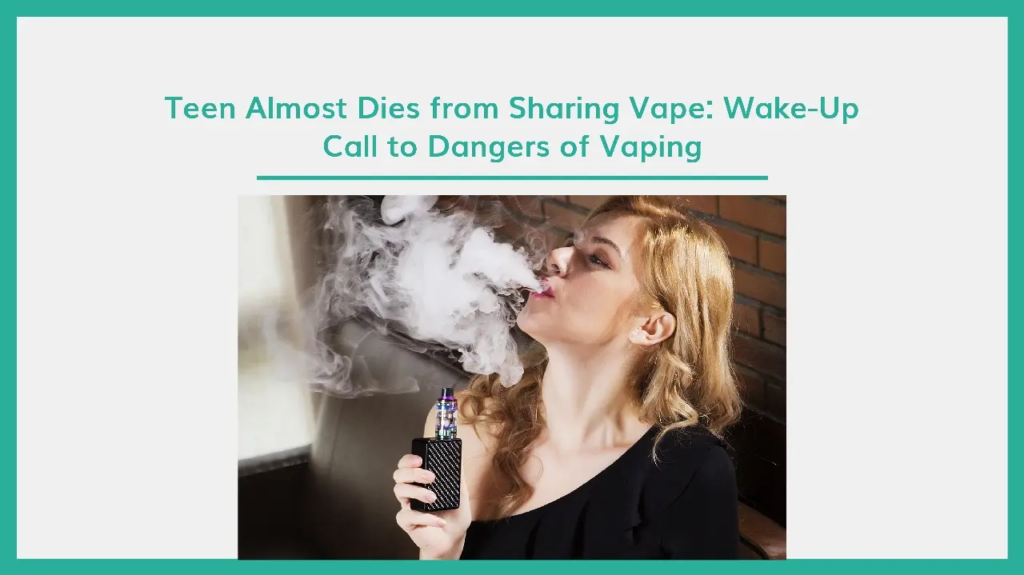In recent years, vaping has surged in popularity across the United States,health, particularly among young people drawn to its sleek devices, enticing flavors, and the perception that it’s a safer alternative to smoking. However, a wave of new studies is raising serious concerns about the health risks of e-cigarettes, especially their impact on lung health. These findings are fueling heated debates about the need for tougher regulations and more robust public health campaigns to curb youth vaping. As the evidence mounts, policymakers, health experts, and communities are grappling with how to balance vaping’s potential as a smoking cessation tool with its dangers, particularly for teenagers and young adults.

Growing Evidence of Lung Damage
Emerging research is shedding light on the harmful effects of vaping on the lungs, challenging the notion that e-cigarettes are a harmless alternative to traditional cigarettes. A 2024 study from Manchester Metropolitan University found that young adults who vape perform as poorly as smokers in strenuous exercise tests, showing reduced lung capacity and increased shortness of breath compared to non-users. This suggests that vaping may impair lung function in ways similar to smoking, even in otherwise healthy individuals. Another study from Boston University, published in 2020, reported that current e-cigarette users face a 43% higher risk of developing respiratory diseases like asthma, chronic bronchitis, or chronic obstructive pulmonary disease (COPD) compared to non-users. Past vapers also showed a 21% increased risk, indicating that even short-term use could have lasting consequences.
The chemicals in e-cigarette aerosols are a major concern. Unlike cigarette smoke, which contains thousands of toxic substances, vaping aerosols still include harmful compounds like formaldehyde, acrolein, and diacetyl—a flavoring chemical linked to a serious condition known as “popcorn lung.” Johns Hopkins lung cancer surgeon Stephen Broderick has noted a troubling rise in collapsed lungs among young vapers, particularly tall, thin individuals who may already have weak spots in their lungs from rapid growth during adolescence. These cases, while rare, highlight the potential for vaping to cause irreversible damage, especially in developing lungs.

Perhaps most alarming is the 2019 outbreak of e-cigarette, or vaping, product use-associated lung injury (EVALI), which affected over 2,000 people and led to dozens of deaths in the U.S. Researchers later identified vitamin E acetate, often added to THC-containing vape products, as a primary culprit. However, the incident underscored the risks of unregulated or modified vaping devices, particularly those bought from informal sources. While the EVALI outbreak has waned, it remains a stark reminder of the dangers lurking in vaping products, especially for young users experimenting with untested substances.
Youth Vaping: A Persistent Public Health Challenge
The rise in youth vaping has been a growing concern for public health officials. According to the 2024 National Youth Tobacco Survey (NYTS), conducted by the FDA and CDC, 1.63 million middle and high school students reported using e-cigarettes in the past 30 days. While this marks a significant decline from the peak of over 5 million in 2019, it still represents a substantial number of young people exposed to nicotine and other harmful substances. The survey also revealed that 85% of youth vapers prefer flavored e-cigarettes, with fruit, candy, and mint flavors being the most popular. These flavors, often marketed in colorful packaging, are widely seen as a key driver of vaping’s appeal to teens.
Nicotine, present in nearly all e-cigarettes, poses unique risks to adolescents. The CDC warns that nicotine can harm the developing brain, affecting areas that control attention, learning, mood, and impulse control. Teens who vape are also more likely to start smoking traditional cigarettes, a trend known as the “gateway hypothesis.” A 2019 Yale study found that students who used e-cigarettes were more likely to smoke cigarettes later, raising fears that vaping could undo decades of progress in reducing youth tobacco use.
The social and environmental factors driving youth vaping are complex. Peer influence plays a significant role, with 39% of students citing use by friends or family as a reason for trying e-cigarettes, according to the 2016 NYTS. The availability of affordable, disposable devices and aggressive marketing by vaping companies further exacerbate the issue. Many young people perceive vaping as less harmful than smoking, a misconception that public health campaigns are now working to correct.

Calls for Stricter Regulations
The mounting evidence of vaping’s risks has intensified calls for stricter regulations. In 2019, the American Medical Association (AMA) urged a total ban on unapproved e-cigarette products, citing the youth vaping epidemic and the EVALI outbreak. While the FDA has authorized a few e-cigarette products for adult smokers seeking to quit, it has denied marketing approval for many others, emphasizing that no vaping product is entirely safe. The agency has also cracked down on illicit sales to minors, but enforcement remains a challenge, particularly with the rise of “shortfill” liquids and modified devices that skirt regulations.
Lawmakers are responding with new proposals. The Tobacco and Vapes Bill, currently under consideration in the U.S., aims to limit flavors and packaging that appeal to children, ban disposable vapes, and strengthen penalties for underage sales. Some states, like California, have already implemented bans on flavored tobacco products, while others are raising the minimum age for purchasing e-cigarettes to 21. However, these measures face opposition from the vaping industry, which argues that e-cigarettes are a valuable tool for adult smokers trying to quit and that heavy-handed regulations could stifle innovation.
The debate over regulation is further complicated by mixed evidence on vaping’s role as a smoking cessation aid. While some studies suggest that e-cigarettes can help adults quit smoking, others indicate that many vapers continue using both cigarettes and e-cigarettes, a practice known as dual use that may increase health risks. The FDA has not approved vaping as a cessation method, and health experts caution that the long-term effects of e-cigarette use remain unclear.
Public Health Campaigns Target Youth
To combat the youth vaping epidemic, public health campaigns are ramping up efforts to educate teens about the risks. The FDA’s “The Real Cost” campaign, launched in 2014, has reached approximately 90% of U.S. teens with messages about the health consequences of vaping. In 2021, 60.9% of middle and high school students recognized the campaign, with higher awareness among high schoolers. The CDC’s “Empower Vape-Free Youth” campaign targets educators, providing resources to help teachers and parents discuss the dangers of vaping with students.
In 2025, England launched the “Love Your Lungs” campaign, aimed at 13- to 18-year-olds, which highlights how vaping can trigger asthma and damage developing lungs. While this campaign is based in the UK, its approach—using social media and influencers to reach young audiences—could serve as a model for U.S. initiatives. These campaigns emphasize the importance of prevention, as many teens who vape want to quit but struggle with nicotine addiction. In 2020, 63.9% of student vapers expressed a desire to quit, and 67.4% had tried to stop in the past year, according to the NYTS.
Looking Ahead
As new studies continue to reveal the risks of vaping, the U.S. faces a critical moment in addressing this public health challenge. The decline in youth vaping since 2019 is encouraging, but the persistence of 1.63 million young users underscores the need for sustained action. Stricter regulations, such as flavor bans and restrictions on disposable devices, could reduce vaping’s appeal to teens, but they must be carefully balanced to preserve options for adult smokers seeking alternatives. Meanwhile, public health campaigns play a vital role in dispelling myths about vaping’s safety and empowering young people to make informed choices.
The long-term health impacts of vaping remain uncertain, and experts agree that more research is needed to understand its effects on youth and adults alike. For now, the message from health professionals is clear: vaping is not safe, especially for young people. As communities, schools, and policymakers work together to address this issue, the goal is to protect a new generation from the risks of nicotine addiction and lung damage, ensuring a healthier future for all.
Read more :- Top 10 Best American Superfoods That Boost Immunity Naturally





